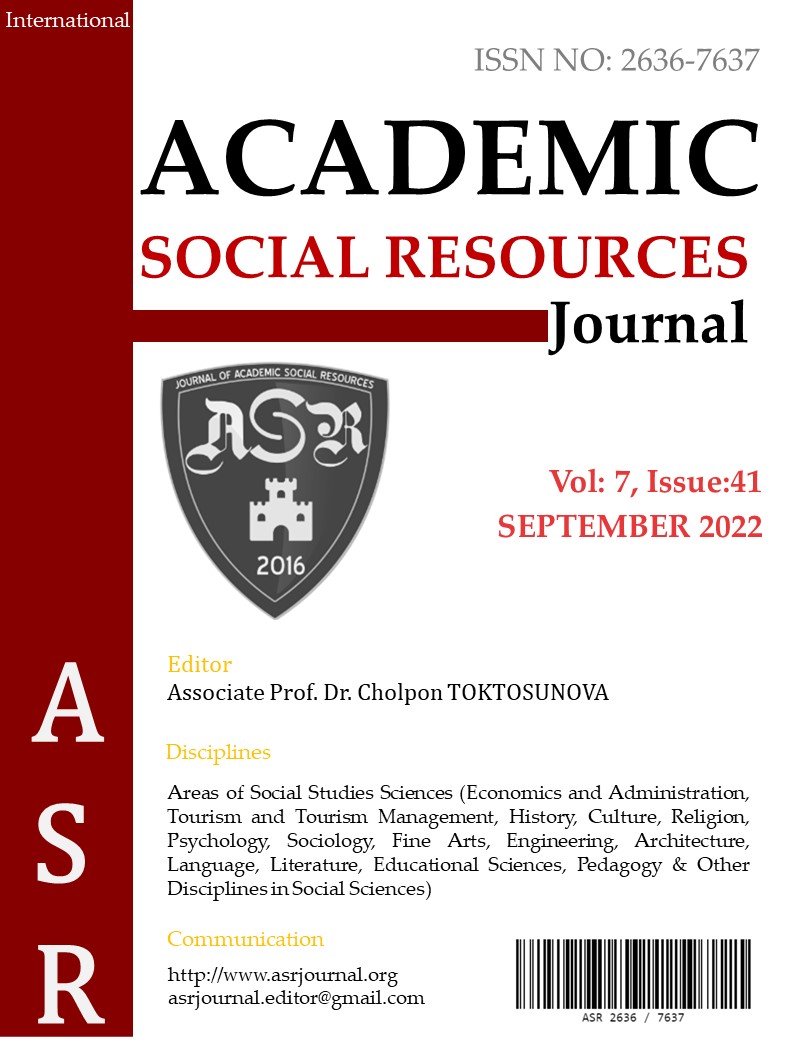Subasar Ormanlarının Biyosfer Rezervi Olarak Planlanması Üzerine Araştırmalar; Acarlar Longozu Örneği
Author :
Abstract
Türkiye’nin kuzeybatısında Sakarya ili sınırları içinde yer alan Acarlar Longozu sahip olduğu ekolojik özellikleriyle çok önemli bir sulak alan durumundadır. .Sulak alanları sahip oldukları ekolojik işlevleri ile ekosistem yaşam süreçlerini doğrudan etkileyen son derece önemli kritik hassas alanlardır. Ayrıca sahip oldukları doğal güzellikleri ve ekonomik avantajları nedeniyle çoğu zaman tahribata son derece açık alanlardır. Bu nedenle korunması zorunlu alanlardır. Bu bilincin dünya çapında giderek yayılması ile birlikte 1970 lerden beri UNESCO’ nun İnsan ve Biyosfer programı ile uluslararası önem taşıyan alanlar 1970 yılından beri tescillenmektedir. Acarlar Longozu, 2019 yılında Ulusal Öneme Haiz Sulak Alan olarak belirlenmiş ve koruma önlemleri alınmaya başlamıştır. Ancak bu çalışma kapsamında gerçekleştirilen araştırmalar da göstermektedir ki alanın yeni bir biyosfer rezerv alan potansiyelinin olduğu düşünülmektedir. Bu çalışma kapsamında zengin biyoçeşitliliğin korunması amacıyla araştırma alanı üzerinde koruma alan sınırlarının oluşturulması amacıyla araştırmalarda bulunulmuştur. Bu amaçla arazinin mevcut durumuna göre doğal potansiyelin korunması ve kullanım kriterleri bağlamında puanlandırılmıştır. Alanda ekolojik birimlerin belirlenmesi ve doğa koruma alanı ölçütleri bünyesinde ortaya çıkan hedefler doğrultusunda Coğrafi Bilgi Sistemleri ve Uzaktan Algılamadan kullanılarak arazi örtüsü belirlenmeye çalışılmıştır. Ayrıca NDVI bitkisel yoğunluk analizleri yapılmıştır. Bu analizler sonucunda sulak alan durum tespiti yapılmıştır. Alanın çok kriterli olarak değerlendirilebilmesi için ihtiyaç duyulan çakıştırmalarda kullanılmak üzere altlık haritalar oluşturulmuştur. Bu haritalar kullanılarak doğa koruma alanı belirleme ölçütlerinden olan enderlik, çeşitlilik kriter sonuçlarına göre doğallık, hassaslık, nadirlik, büyüklük puantajlamaları sonucunda elde edilmiştir. Bu veriler haritalara işlenerek haritaların çakıştırılmasıyla bölgeleme sistemi (çekirdek, tampon ve geçiş bölgeleri) kullanım ilkeleri sonucunda öneri bölgeler meydana getirilmiştir.
Keywords
Abstract
Acarlar Floodplain, located within the borders of Sakarya province in the northwest of Turkey, is a very important wetland with its ecological characteristics. Wetlands are extremely important critical sensitive areas that directly affect ecosystem life processes with their ecological functions. In addition, due to their natural beauties and economic advantages, they are often extremely vulnerable to destruction. Therefore, they are areas that must be protected. With the spread of this awareness around the world, areas of international importance have been registered since 1970 with UNESCO's Man and Biosphere program since the 1970s. Acarlar Floodplain was designated as a Wetland of National Importance in 2019 and protection measures have been taken. However, the researches carried out within the scope of this study also show that the area is thought to have a new biosphere reserve area potential. Within the scope of this study, researches were carried out in order to establish the boundaries of the protected area on the research area in order to protect the rich biodiversity. For this purpose, it has been scored according to the current situation of the land in the context of protection of natural potential and usage criteria. Land cover has been tried to be determined by using Geographical Information Systems and Remote Sensing in line with the objectives of determining ecological units in the area and nature protection area criteria. In addition, NDVI vegetative density analyzes were performed. As a result of these analyzes, wetland status determination was made. Base maps were created to be used in the overlapping needed for the multi-criteria evaluation of the area. By using these maps, naturalness, sensitivity, rarity and size scores were obtained according to the rarity, diversity criteria, which are among the nature protection area determination criteria. These data were processed into maps and suggested regions were created as a result of the use principles of the zoning system (core, buffer and transition zones) by overlapping the maps.
Keywords
- 1. Cowardin, L.M., Carter, V., Golet, F.C., Laroe, E.T., (1979). Classification of Wetlands and Deepwater Habitats of the United States, U.S. Department of Interior Fish and Wildlife Service, Washington, U.S.A.
- 2. Halffter G. (1981). The Mapimı´ Biosphere Reserve: Local participation in conservation and development. Ambio 10: 93–96.
- 3. Kısakürek, Ş. (2006). Kahramanmaraş Çimen Dağı Örneğinde Dağlık Alan Yönetim Planlaması, A. Ü. Peyzaj Mimarlığı Anabilim Dalı, Doktora Tezi, Ankara.
- 4. Millennium Ecosystem Assessment (2005), https://www.millenniumassessment.org/en/index.html
- 5. Mitsch W.J., Gosselink J.G., (1993) Wetlands, Second edn. Van Nostrand Reinhold, New York
- 6. Özyavuz, M. (2008). Yıldız Dağları'nın İğneada - Demirköy Arasında Yer Alan Bölümünün Biyosfer Rezervi Olarak Planlanması. Ankara: Ankara Üniversitesi.
- 7. Özyavuz, M. ve Yazgan, M. (2010). İğneada Longos (Su altındaki) Ormanlarının Biyosfer Rezervi Olarak Planlanması. Kıyı Araştırmaları Dergisi: Cilt 26, Sayı 6: sf. 1104 – 1111
- 8. Ramsar Convention Bureau, (1992). Ramsar Convention, Slimbridge, England.
- 9. Sarıçam, S. Y., (2007), İzmir İl bütününde Biyosfer Rezerv Alanları ve Saptanması Üzerine Araştırmalar‘Karaburun Yarımadası Örneği’ Ege Üniversitesi Fen Bilimleri Enstitüsü, Doktora Tezi, 203, İzmir.
- 10. Solak R. D., (2022). Acarlar Longozu’nun Biyosfer Rezervi Olarak Planlanması Üzerine Araştırmalar, Çanakkale Onsekiz Mart Üniversitesi Lisansüstü Eğitim Enstitüsü, Peyzaj Mimarlığı Anabilim Dalı, Yüksek Lisans Tesi, 79, Çanakkale.
- 11. Tarım ve Orman Bakanlığı, (2022). Acarlar Gölü Longoz Ormanı Sulak Alan Yönetim Planı Projesi (Nihai Plan)(2022 - 2026), Tarım ve Orman Bakanlığı Doğa Koruma Ve Milli Parklar Genel Müdürlüğü,2022.
- 12. Unesco Mab. (2003). United Nations List of Protected Areas https://portals.iucn.org/library/sites/library/files/documents/UNLNP-2003.pdf Erişim Tarihi: 9.11.2021
- 13. Yılmaz, O. ve Ayhan K. Ç., (2016). Identıfyıng The Regeneratıon Of Forests Post-Fıre Wıth Remote Sensıng Technıques And Examınıng The Impact Of Forest Regeneratıon On The Natural Landscape Character: A Case Study Of Erenkoy/Canakkale. Oxidation Communications 39, No 1-II, 511–520
- 14. Yücel, M ve Babuş, D., (2005). Doğa Korumanın Tarihçesi ve Türkiye’deki Gelişmeler, Doğu Akdeniz Ormancılık Araştırma müdürlüğü, DOA Dergisi, Sayı 11, Sf. 15- 175, Adana.
- 15. Zal, N. (2006). Aşağı Meriç Taşkın Ovası’nın Biyosfer Rezervi Olarak Belirlenmesi Üzerine Bir Araştırma, A.Ü. Fen Bilimleri Enstitüsü, Doktora Tezi, Ankara.
